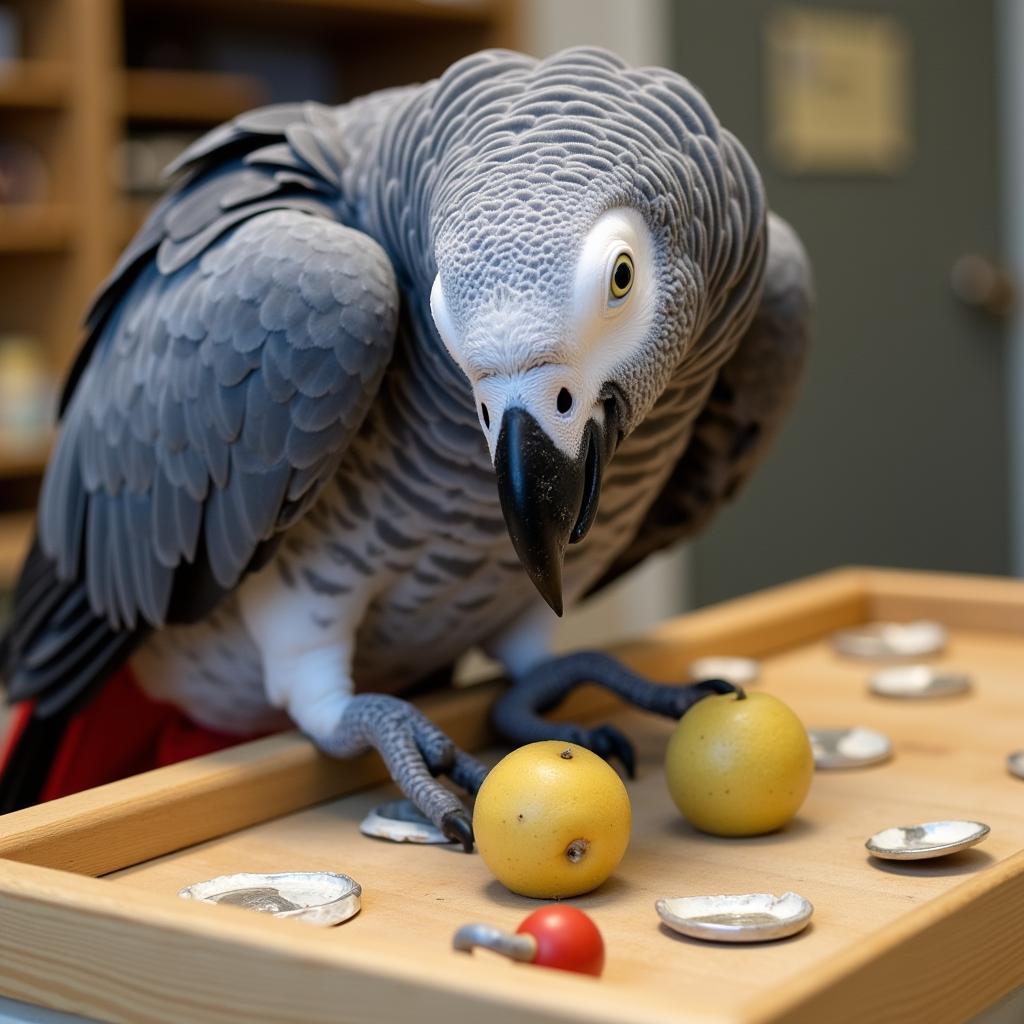The Amazing Talking African Grey Parrot: Alex and Beyond
The African grey parrot, known for its striking silver plumage and bright red tail feathers, is more than just a beautiful bird. This species possesses an incredible ability to mimic human speech, making it a popular choice for companion parrots. But one African grey parrot, named Alex, soared beyond simple mimicry and changed the way we think about avian intelligence forever.
Alex the African Grey: A Legacy of Learning
In 1977, a young Dr. Irene Pepperberg purchased a one-year-old African grey parrot from a Chicago pet store. She named him Alex, short for “Avian Learning Experiment”, and thus began a groundbreaking journey into the cognitive world of parrots. Dr. Pepperberg’s goal was not to simply teach Alex to speak but to understand what those words meant. Using a novel training method called the model/rival technique, Alex learned to identify objects, colors, shapes, and numbers. He could even combine these concepts to express complex ideas, demonstrating an understanding far beyond simple repetition.
 Alex interacting with a researcher
Alex interacting with a researcher
More Than Just Mimicry: Understanding Parrot Intelligence
Alex’s accomplishments were remarkable. He could identify over 50 different objects, distinguish between seven colors and five shapes, and count up to six. He understood the concepts of “same” and “different” and could even use phrases like “I want” and “no” to express his desires. In one experiment, presented with a tray of different colored blocks and balls, Alex correctly answered the question “How many blue blocks?” This demonstrated his ability to understand abstract concepts like color, shape, and number, and to combine them to answer a question.
 Alex solving a problem
Alex solving a problem
The Science Behind the Speech: How African Greys Learn
How do African grey parrots like Alex learn to speak and understand human language? It’s a combination of factors. These birds have a highly developed vocal learning system, allowing them to mimic sounds with incredible accuracy. They also possess a dense concentration of neurons in the brain regions responsible for vocal learning and cognitive function.
But perhaps the most crucial element is social interaction. African grey parrots are highly social creatures that crave interaction and stimulation. In the wild, they communicate with each other through a complex system of calls, songs, and body language. When kept in captivity, they thrive in environments where they receive plenty of attention and mental enrichment.
Beyond Alex: What We’re Still Learning About African Grey Parrots
Alex’s legacy extends far beyond his impressive vocabulary. He helped to shatter the misconception that birds are incapable of intelligent thought, paving the way for a new era of research into avian cognition. Today, scientists continue to study African grey parrots, uncovering new insights into their remarkable abilities in areas such as problem-solving, tool use, and social intelligence.
Conclusion: Appreciating the African Grey Parrot
The story of Alex the African grey parrot serves as a powerful reminder of the incredible intelligence and learning capacity of animals. These birds, with their playful personalities and remarkable ability to communicate, continue to captivate and inspire us. As we continue to learn more about African grey parrots, we gain a deeper appreciation for the diversity and wonder of the natural world.


